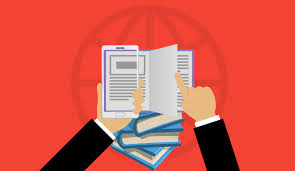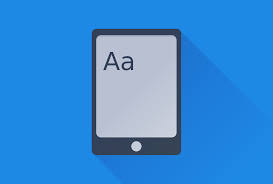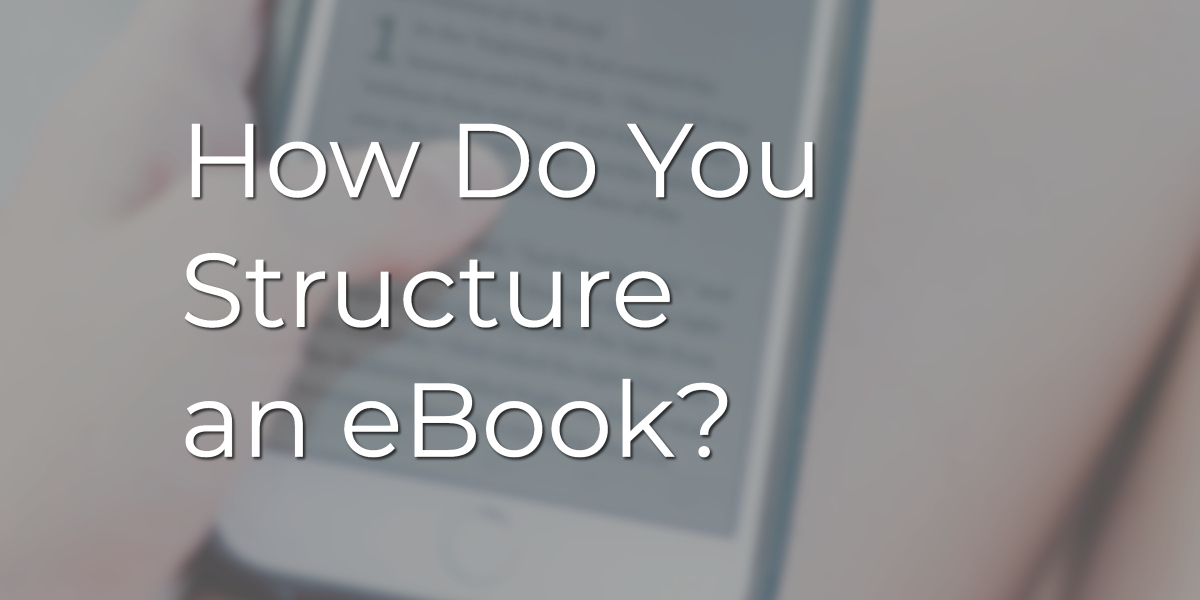We have seen many bloggers creating eBooks that are extremely successful, while others seems to get it all wrong. Consequently, in doing so they struggle to make money even after spending a lot of time creating their eBooks. What are the successful bloggers doing differently? Do they know something that others don’t? Or is there simply a well planned strategy or formula to creating winning eBooks?
In this article, we tell you what you need to know in order to create an engaging eBook. We explain the correct way to structure your ebook so that it speaks directly to your readers. Without further ado, let’s dive deeper.
What is an eBook?

An electronic book, commonly known as an eBook, is a publication that you can read on digital devices such as smartphones, tablets or computers. Often, they are packaged as PDF documents so they can be sent from one person to another. They can also be converted into other formats, such as Mobi, ePub and Kobi.
Bonus! There is no ideal length of an eBook. It all depends on your audience and topic. Generally, as long as it exhaustively covers the chosen topic and effectively educates your readers, there is no need to worry about the length. If you can create one fairly quickly that covers the information needed the better off you are.
Know what to say
An eBook can be about anything. You are not limited to what you can write about. So, pick your favorite topics and do your best to present the information in a way that your readers will understand and appreciate. If you know your readers well, writing a great eBook should be a breeze. We recommend, if possible to know about your readers before getting started.
Adding something extra like a video or free offer is an excellent way to make your readers feel like you have exceeded their expectations. And honestly, if you do that they will look forward to subsequent eBooks.
How is an eBook structured?
While there is no one set rule for organizing your content generally eBooks mimic the structure of textbooks or novels. However, there are some aspects of an eBook you must adhere to. That is, you must include chapters, images, and segment your eBook by adding relevant headings and subheadings.
Ways to structure your eBooks

Here are eight ways to structure your eBook:
Introduction, key points, conclusion
This approach is very easy and one that many bloggers love. Your start with an introduction that highlights what the entire eBook is all about, then include chapters that are made up of key information and images, and a conclusion that wraps up everything.
Having an outline makes it easier to come up with an engaging eBook that is well structured. So, always make sure your outline is ready before getting started.
The 4MAT Model
We have not tried this approach ourselves, but it is one that is very common among teachers and coaches. It is based on how we learn and implies that four vital modes must be covered in the sequence:
Why = motivation: Why should I be interested in this? What is the issue that needs to be solved?
What = broad solution: What is the universal solution to this issue?
How = specific solution: What are the steps or details I need to take to unravel this?
What Else = resources: What additional information is available about this topic?
See the example below:
Why: This is vital as it provides the skeleton on which to build your idea and offers a clear pathway for your reader to comprehend the information.
What: It is a decision on how to format what you are writing. In this article, we share eight ways to structure your ebook.
How: The eight ways for structuring your content.
What Else: The video is an example of how to go learn more from the content.
Sequence
Use this approach if you are teaching your audience how to do something. The best way to structure this is through a sequence of steps or ideas. Ask yourself the following:
What do I need to do first?
Then what?
After that?
And, what’s the last thing I need to do?
Alphabetical
As the name suggests, this method involves listing your content alphabetically. If you choose to use this approach, we recommend that you put keywords into an alphabetical sequence in the index. That way, it will be easier for the reader to find specific content.
Random
This approach comes in handy when you have a list of items that can be read as independent chunks or that don’t fit neatly together. For example, “ten ways to make money selling free eBooks.”
Loose groups
Loose groups are one step further from the previous random method. For example, “100 ways to make money online”. In this example, each way to make money can be reviewed as an independent approach not tied or related to another item.
Time
Are you writing about a topic or event that is related to a specific time line? For example, about your college experience and how things changed for you from the first year to graduation.
Beginner, intermediate, expert
Are you creating an eBook that is based on questions and answers targeted to a specific group? If so, it makes sense to arrange your content in terms of expertise levels. Are your readers new to the material or do they already have a lot of knowledge? Know your audience and craft your content accordingly from beginner to expert. By doing this, you make it easier for your readers to learn and advance their skills through your eBooks.
How to create an eBook

We have seen various ways to structure your eBook, now let’s take a look at what you need to do to create a good one:
Pick the right topic
What message do you want to get across? Who are you writing for? Newbies, intermediates, or experts? Knowing the kind of message you want to tackle makes it easier to come up with a compelling topic. A good topic is one that both attracts potential readers and also encourages them to take further action.
Below are a few ideas to get you started:
- A product guide
- An expanded version of existing blog article
- A case study based on a customer story
- Content around industry studies and statistics
- An introduction to your industry
- An answer guide to FAQs
- An interview with an industry expert
Write a compelling title
A compelling title highlights the topic and resonates with your target audience. It should also include some benefits and capture the attention of search engines. So, consider inserting a few target keywords in your title.
Bonus! Sometimes, it is o.k. to add a subtitle to clarify and expand on what your ebook is all about.
Do the following to make your title more memorable and appealing:
- Use numbers to add credibility
- Ask a question that your readers often ask
- Include catchy and uncommon words
- Use emotional adjectives to show how clients might feel now or how they will feel after reading
- Tell readers what they can achieve, such as “Lose 15 pounds in one week”
- Mention your readers in the title, for instance include the words “tenant”, “homeowner”, or “business owner”
- Apply the 5Ws “who, what, when, where, why” and “how” questions to your topic
Create an outline

Earlier, we mentioned why you need an outline. It helps to ensure that you cover everything that is needed and gives your eBook a structure that is easier to read and follow. An outline can help you to effectively get your message across. Remember, to include images that tie in nicely to the content. This helps to increase the understanding of the information.
Get writing
With your outline completed, you can now start writing your eBook. Make sure to use the right language and tone that speaks directly to your readers. Format the content so it is easy to follow. And keep in mind how you create your first eBook will significantly impact whether your readers will come back for more.
Also, don’t forget to optimize your eBook for lead generation. If you are not sure how to correctly do this then hire someone to complete this task for you. It’s important to get it right. Luckily, today it is fairly easy to find freelance writers who do this kind of work.
Make it look attractive

Once you have finished writing your eBook the next step is to customize it. Here we tackle the look and feel, which ultimately is what gets the attention of potential readers. Try some of these suggestions to make your eBook more enticing and attractive:
- Add your logo for branding purposes to the cover of your eBook
- Include your contact information on the last page and your company name in the footers
- Break up text with statistics and large font quotes to support the topic
- Use bolded text to highlight key phrases and points
- Add colors for contrast and shapes to increase visual interest of key information
- Use short, easy to read sentences
- Insert headings, graphics and images to break up text and make your topics easier to understand
- Modify your color scheme to match your brand colors
- Use the same font combination for the main headings, subheadings and body
- Add a Table of Contents to make it easier for readers to locate different sections
Promote it
Looking to attract tons of readers to your eBook? If so, then you need to have an effective promotional strategy. Thankfully, it’s fairly easy to create one. You can promote your eBook on your blog or other platforms, such as Amazon, iBooks, Kobo, Nook, etc. As well, don’t forget about your subscribers. Send them an email letting them know about your new eBook.
Taking It Further
Besides giving your readers valuable content an eBook is also an excellent marketing tool. It helps you drive traffic, increase sales and build your authority. Now imagine what multiple eBooks could do for you! That is why you must include eBook creation as part of your content marketing strategy.
Ebook creation tools

Once you have completed your eBook you need to convert it to a simple to read format. Most bloggers convert their eBooks to PDF. Besides Microsoft Word, here are some of the best tools to create an eBook:
How much money can you make from writing an eBook?
Of course, there is no guarantee that your eBook will make you a lot of money. In fact, from the current 200,000 authors selling ebooks on Amazon only 5,000 of them, which is less than 3% are making $10,000 annually. That is a clear indicator that most authors will never earn substantially from their eBooks.
But this does not mean that you shouldn’t create eBooks. If you can keep your investment low, even when sales are modest, you will still make some profit. You can also hire a freelance writer for a reasonable rate so that you can dedicate your time to other tasks that help to grow your business.
Just remember, if you keep your readers happy and consistently provide quality content, your eBooks will begin to sell.
